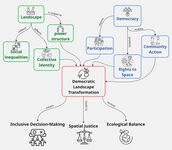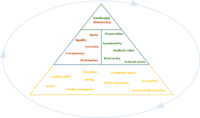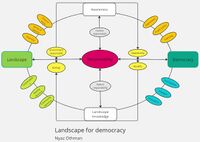Democratic Landscape Transformation 2024 - Team 7
>>> Back to working group overview
>>> Back to seminar reading list
>>> go to the Editing Help
Background of your team
Please present your team briefly. Which linguistic and cultural perspectives does each member bring in? Which disciplinary backgrounds are present in your team?
- Hello, I'm Gabriele Lione from Italy. I come from the northern part of Italy in which Italian and german are spoken, but I can also speak English. I am stdying Engineering/Architecture in Bologna and this is my 5th year.
- This is Nyaz Othman from Iraqi Kurdistan. I am Kurdish and my mother tongue is Kurdish. I studied Architecture and Urban Planning. I am currently a student in the IMLA program.
- I'm Gabriele Barbaro an Italian student enrolled in the 5th year of the Building Engineering-Architecture program. I was born in a southern region of Italy but have mostly lived in the north, thus coming into contact with environments that have a strong commitment to innovation and sustainability, while also being aware of the challenges and contexts where such commitments are less prevalent. I am pursuing a multidisciplinary education in Building Engineering-Architecture. This program, which combines both theory and practice, allows me to bring an approach that merges design with a focus on sustainability and innovative building technologies.
- Hello, I'm Benedek Sölch from Hungary, currently on the IMLA program with Erasmus . This is my second year in the Master of Landscape Architecture on the MATE (Hungarian Agricultural and Life Sciences university).
Your Landscape Democracy Manifestoes
Here you can add links to the manifestoes you have presented on April 24. Please make sure that the links are accessible. You can also add them directly here on the wiki, they need to be png or jpg format then.
- Gabriele Lione https://drive.google.com/file/d/19wiHEiJqFXEziu_YsjFIT3ScalAftruc/view?usp=drive_link
- Benedek Sölch: https://drive.google.com/file/d/1OhAxt4AGiiUE0tWpaK59MVwsxqobqvo9/view
- NYAZ OTHMAN https://drive.google.com/file/d/1I9CmsjkCTnzc8yYVO76oewUatknnep1U/view?usp=sharing
- Gabriele Barbaro: https://drive.google.com/file/d/1xtKif9oT_b00UMzZSyXSkV2ykX3VAnWs/view?usp=sharing
Readings, concepts and definitions
- Start: April 3, 2024
- Due: July 2, 2024
While working in your group, please start to express your personal understanding of the relation of landscape and democracy in the form of a concept map with linking words or any other diagrammatic representation. Please make your maps very visual and not just verbal. Think critically about why one map differs from another.
The final product is a shared concept map that integrates the various understandings present within your team.
About concept mapping
Before starting the exercise you can read this article by Joseph D. Novak & Alberto J. Cañas about Theory Underlying Concept Maps and How to Construct and Use Them. This paper gives a good explanation of how concept maps are conceived and developed.
You can use any tool you like for producing your concept map. However, since the result needs to be submitted digitally we recommend the following open source software for producing your maps:
- Cmap Tools >>> you can also work with your group on the Cmap cloud doing a shared map
- VUE - The Visual Understanding Environment
- Use a shared whiteboard to develop your integrated concept map, such as MIRO or MURAL
How to present your concept maps
- Possible format: JPG (for wiki upload) or link to any other resource
- We give you below a draft image gallery where you can add pictures of your map (in JPG or PNG format)
- You can present your integrated understanding as one concept map or your present individual ones and the integrated one.
- add as many additional materials as you need
Overview of your concept maps (individiual and integrated)
Please finish with a short reflection
- Working as a team of students and professionals from different origins showed us different points of view. It helped us consider which parts of the complicated concept of Landscape Democracy were and weren't shared, and what differed, just from the different languages and translations that came from it. We established that, we, as a group, shared a similar view of the concept of Landscape Democracy. We havent shared our individual maps before our online meeting in which we made our integrated map, and that could be a different route to take if we would repeat this process. The meeting was fairly easy to organize and we just had to schedule one date and time. We tried using different methods for working toghether but we reached the conclusion that Miro worked best as everyone had already used it. Sadly one person couldnt really participate much in the group collaboration. We think starting the collaboration towards the end of the seminar made it simpler for everyone to understand some terms and concepts which could be considered "difficult" but also shaped everyones view and maybe directed them in a specific direction. The theory session very helpful and insightful.




